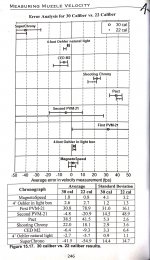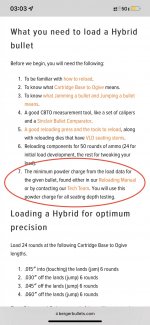This is a follow-up to an earlier thread of mine. Remington 700 rifle…reloading 185 grain Berger Juggernaut with Varget and H4895, Lapua brass, CCI primers. Shooting at 100 yards off bench, bipod and bags.
The first photo is 42.9 grains of H4895. SIX rounds in 7/16 of an inch. Ave 2624 FPS, SD = 18, ES = 48
The second photo is 44.4 grains of Varget. Five rounds in 1.5 inches. Ave speed 2579 FPS, SD = 7, ES = 20.
With 41.7 grains of H4895 I had another six shot group at ¾ inch but an SD of 13 and ES of 34.
Why the heck is such a GREAT group coming from such lousy SD and ES? And vice versa, such a modest group from a very nice SD and ES?
What gives?




